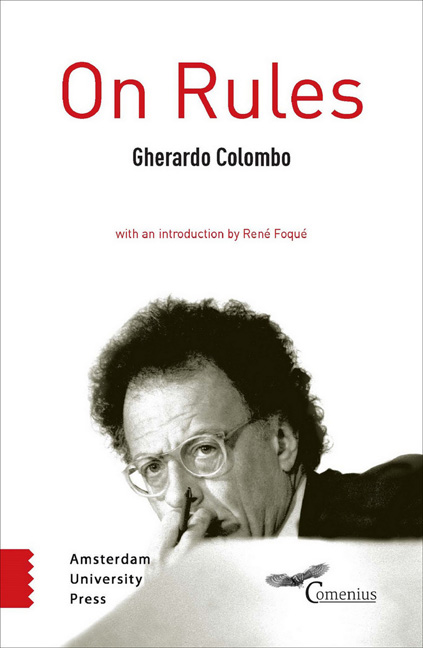Book contents
- Frontmatter
- Introduction: Gherardo Colombo’s Concern for the Democratic State under the Rule of Law: A Work in Progress
- Why?
- 1 An Imaginary Country
- Contents
- Part I The Ambiguities of Justice
- Part II Horizontal Society and Vertical Society
- Part III Towards a Horizontal Society
- Part IV How Do We Get There?
- Conclusion
- Acknowledgments
14 - Fundamental Rights According to the Two Models
Published online by Cambridge University Press: 24 December 2020
- Frontmatter
- Introduction: Gherardo Colombo’s Concern for the Democratic State under the Rule of Law: A Work in Progress
- Why?
- 1 An Imaginary Country
- Contents
- Part I The Ambiguities of Justice
- Part II Horizontal Society and Vertical Society
- Part III Towards a Horizontal Society
- Part IV How Do We Get There?
- Conclusion
- Acknowledgments
Summary
In a vertical society all rights are dependent on an external variable, except for (but not always) those granted to the people at the head of the group. Since individuals are instruments, any of their prerogatives depends on the attainment of the end to which they are a means.
In Imperial Rome it was up to a father to decide whether a newborn baby was allowed to survive. This decision depended on his interests, beliefs, and feelings. In the Middle Ages, the existence of an individual depended – and still depends in some states – on whether he or she had committed a crime punished by the death penalty. In classical Greece, the personal liberty of an enemy depended on whether he or she was caught and reduced to slavery.
In a vertical society, restrictions on the right to life or to freedom are absolute. It depends on the fact that what has to be protected is first of all the type of organisation itself, in which the individual, regarded as an instrument, surrenders to the privileged few at the top of the social hierarchy. The hierarchy, in turn, is intrusive to the point of depriving subordinate individuals of their decision-making ability, which then gets replaced by that of the system. Thus, to name just one example, in some states the private expression of homosexuality is prohibited – which is tantamount to denying the right to free self-determination, even when the freedom of others is not threatened, because the hierarchy imposes a standard of ‘justice’ that disregards respect for the individual.
In a horizontal society too, there are limits to some rights. But when there is a limit, it is always set for reasons of functionality and reciprocity.
First of all, there are no limits to the right to life as long as one is a ‘person’. The state, the institutions, cannot deprive a person of their life. Even when there are situations in which it is impossible to avoid taking a life (for instance, to free a hostage who would otherwise be killed, or in the case of defending against aggression), there is no such thing as the right to kill.
- Type
- Chapter
- Information
- On Rules , pp. 76 - 78Publisher: Amsterdam University PressPrint publication year: 2016



